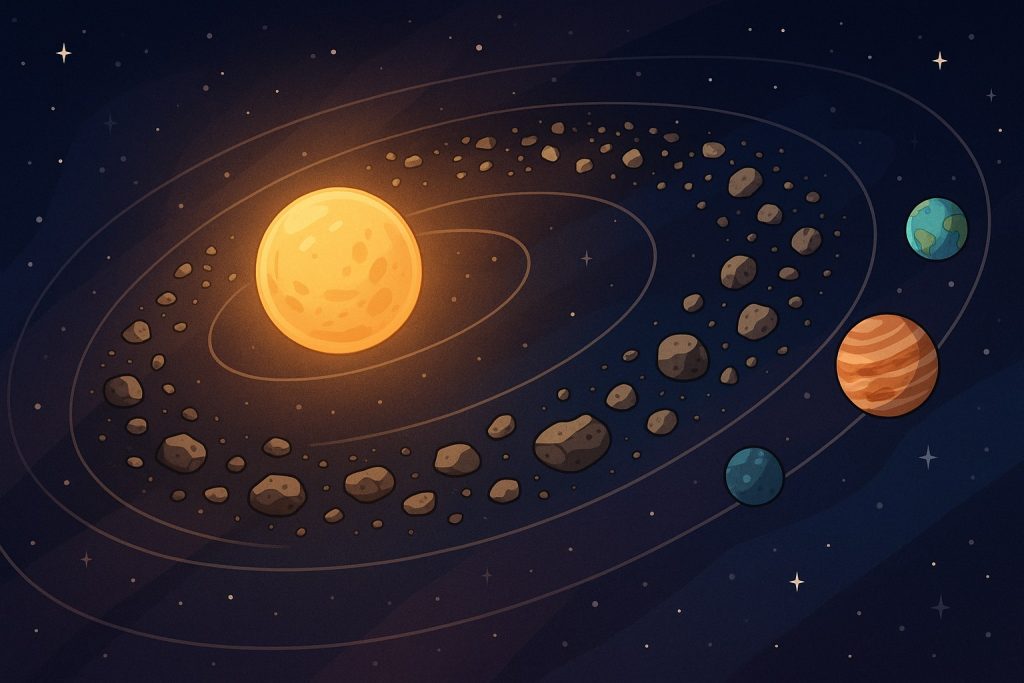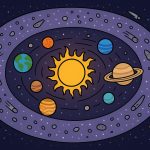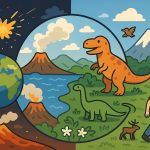The Asteroid Belt is a vast ring of rocky bodies orbiting the Sun between the planets Mars and Jupiter. It contains millions of asteroids — remnants from the early solar system that never formed into a planet. While it may sound like a dangerous minefield, the reality is far more spaced out — and scientifically fascinating.
Where Is the Asteroid Belt?
The main asteroid belt lies between 2.1 and 3.3 astronomical units (AU) from the Sun. This means it’s located between the orbits of Mars (1.5 AU) and Jupiter (5.2 AU). It forms a wide, torus-shaped region filled with objects that orbit the Sun in the same direction as the planets.
How Did It Form?
Over 4.6 billion years ago, the solar system formed from a rotating disk of gas and dust. In the region between Mars and Jupiter, something happened, maybe planet collapse maybe something else – we dont know. The leftover debris clumped into planetesimals, which we now call asteroids.
The belt has remained mostly stable since then, though collisions among asteroids have produced many smaller fragments over time.
What’s Inside the Belt?
The asteroid belt contains:
- Millions of asteroids, ranging in size from dust particles to dwarf planets
- Three main types:
- C-type (carbonaceous) — dark, most common
- S-type (silicaceous) — stony
- M-type (metallic) — made mostly of nickel and iron
Some of the largest bodies include:
- Ceres — the largest object in the belt and classified as a dwarf planet
- Vesta, Pallas, and Hygiea — large and relatively spherical asteroids
Myths vs. Reality
Despite its cinematic portrayal, the asteroid belt is mostly empty space. The average distance between large asteroids is hundreds of thousands of kilometers. A spacecraft passing through has an extremely low chance of hitting anything.
NASA missions like Dawn and OSIRIS-REx have successfully navigated the belt and studied its members up close.
Why Is the Asteroid Belt Important?
- Window into the past — Asteroids are ancient, largely unchanged materials from the early solar system.
- Clues about planet formation — Studying their composition helps us understand how Earth and other planets formed.
- Potential mining sites — Some asteroids are rich in metals like platinum, gold, and nickel.
- Defensive interest — Monitoring near-Earth asteroids (some originating from the belt) is crucial to planetary defense.
Glossary
- Asteroid — A small rocky body orbiting the Sun, mostly found in the asteroid belt.
- Astronomical Unit (AU) — The distance between Earth and the Sun (about 150 million kilometers).
- Planetesimal — A small object formed in the early solar system that could become part of a planet.
- C-type, S-type, M-type — Classifications of asteroids based on their composition.
- Dwarf planet — A celestial body that orbits the Sun, is spherical, but hasn’t cleared its orbital path.


